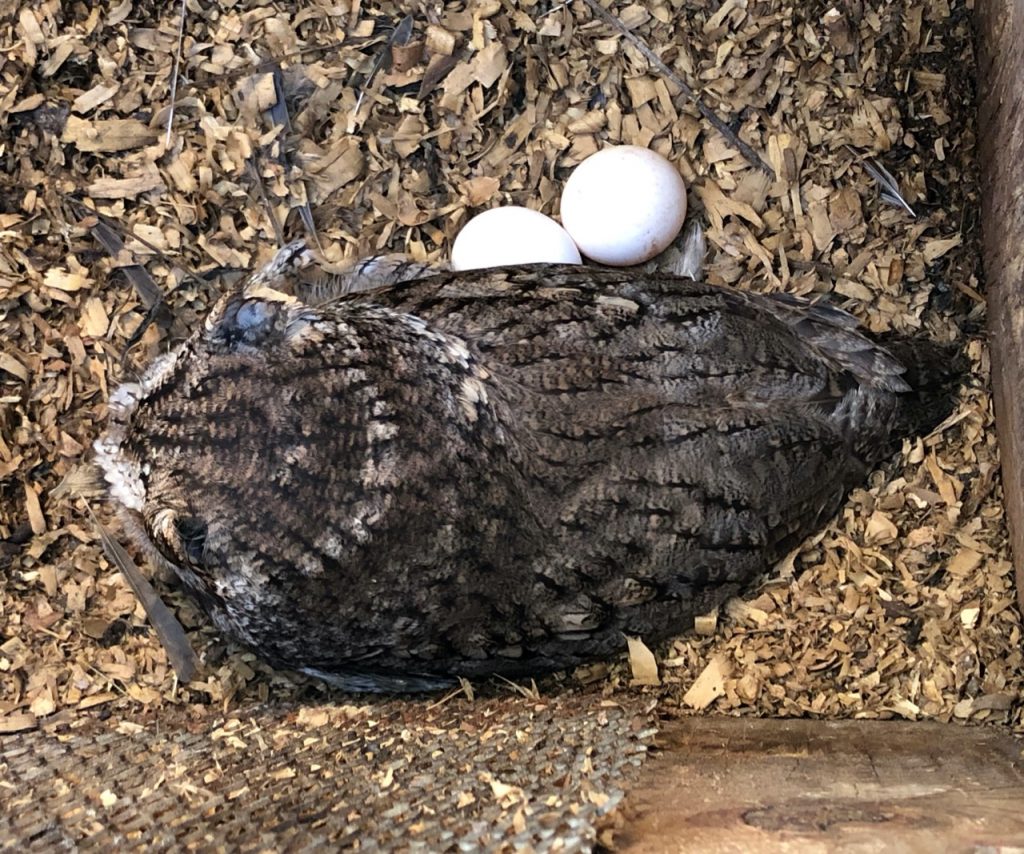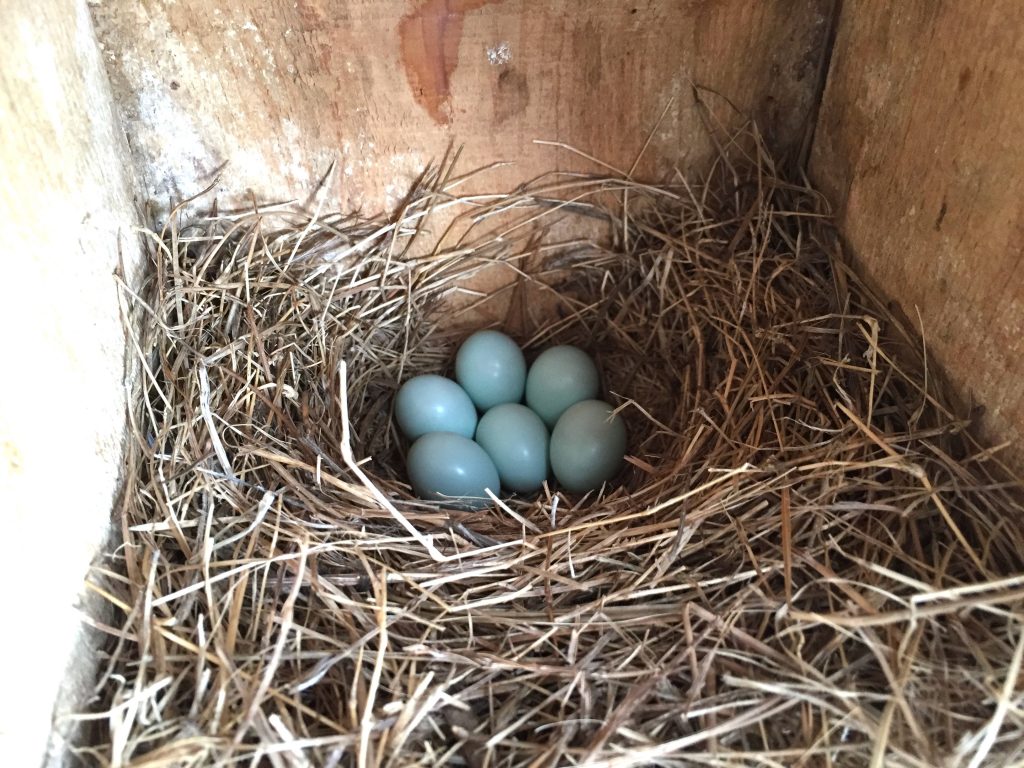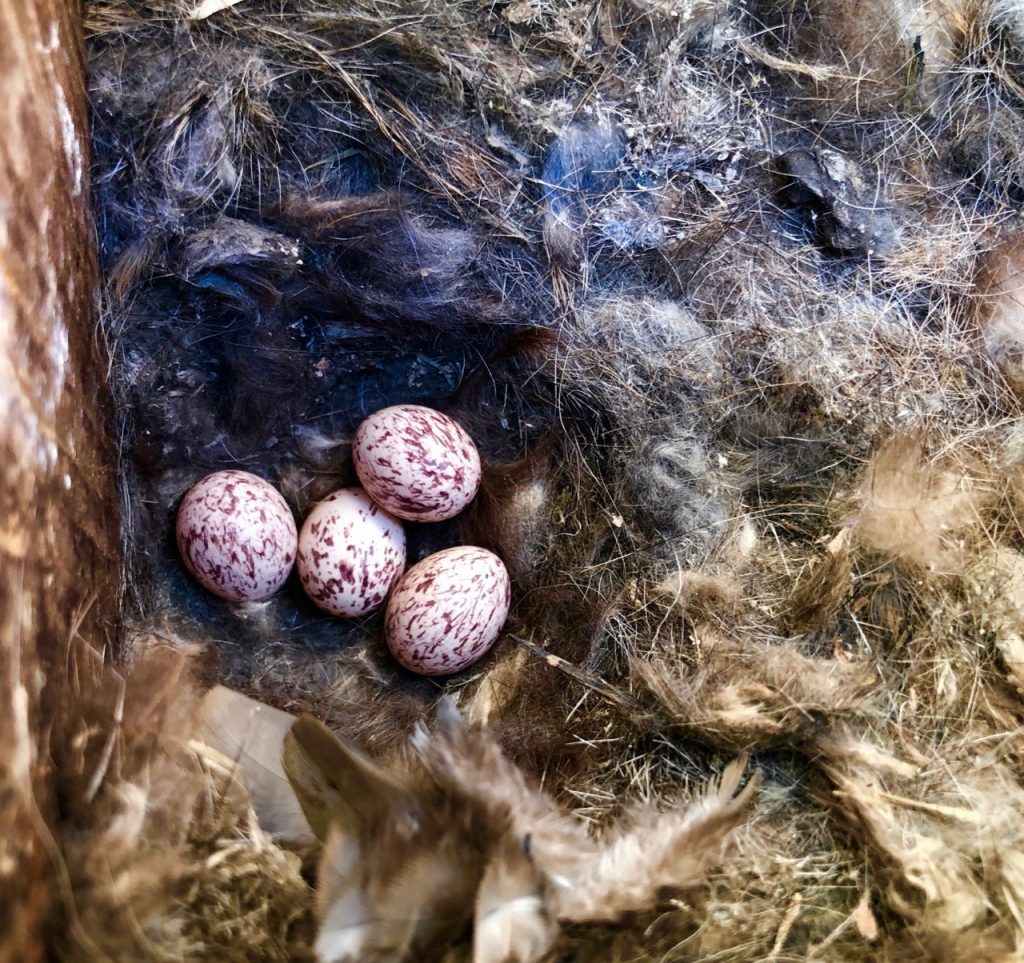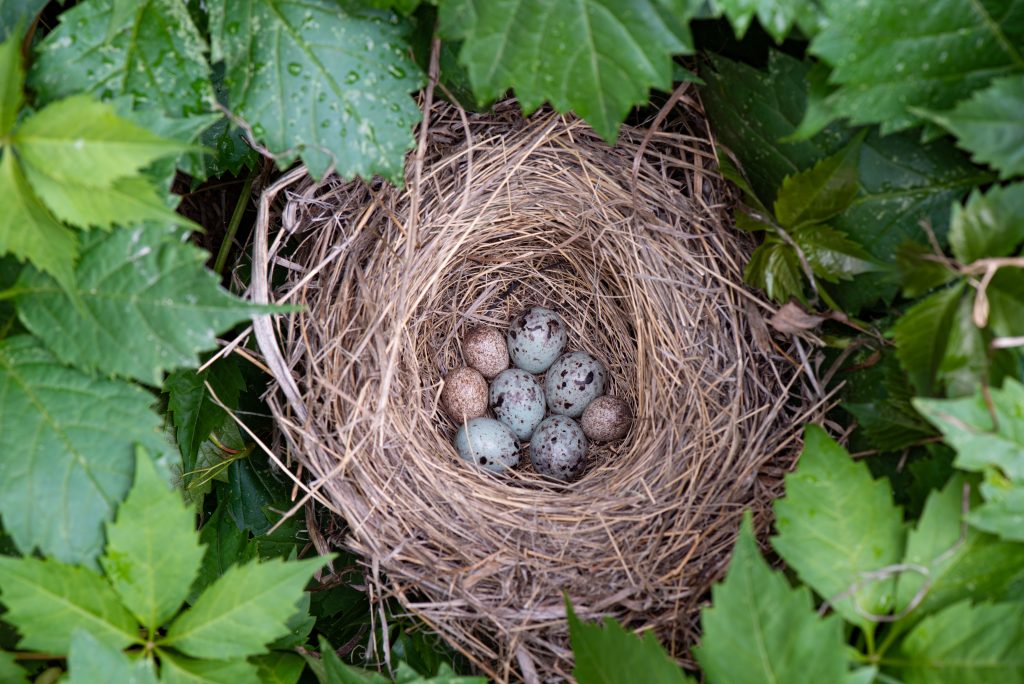Eggshell Color Differences in Cavity-Nesting Birds is Still Open to Speculation
Gillian Martin September 2020

Since cavity-nesting birds obviously nest in low light conditions, it is curious that they produce eggs with wide color differences. Of course, diversity in egg coloration is true of birds in general. What we have learned from paleontologists who’ve studied bird coloration helps us understand more about this interesting topic. A review of the literature cited at the end of this article summarizes the findings of its authors.
Scientists presume that eggs of early birds were likely white and immaculate (without spots). In fact, white or creamy colored eggs with little or no speckling have been retained by species whose nests are relatively safe from attack by predators. (E.g. woodpeckers and kingfishers who are primary excavators, and owls). This intuitively makes sense, doesn’t it? A parent bird can more easily find a white egg in a dark environment. Why then do we see such color differences in eggs laid in tree holes and other enclosed structures, or ball or pendulous nests with small openings?

The best guess to date appears to be this: It is likely that as birds diversified, some species which were not originally cavity nesters, especially non-excavating species, evolved over time to use holes. It is reasonable to guess, therefore, that their egg coloration was influenced by diverse conditions prior to the time when these species used cavities. But what might those conditions have been?
Paleontologists suggest that many diverse factors occurred simultaneously to influence egg coloration. They appear to agree that the two most influential factors are nest location, and the clutch’s vulnerability to nest predation. This raises the question of the role of light.
These authors suggest that the light environment associated with the nest as well as egg luminosity play important roles. A nest’s shape and overall structure influences the amount of light allowed into the nest. Secondly, the nest location, e.g. whether it is in in full or partial shade, the relative density of adjacent or overhead foliage etc. influence the light environment around the nest. Furthermore, some eggs are more luminous than others. It is no surprise to learn that white eggs have higher UV reflectance which makes them brighter. All this impacts how visible and vulnerable eggs are, and how easily parents can identify their eggs and tell them apart from those of a nest parasite.

From this literature we learn that sky-blue eggs; for example, are shown to be cryptic in the filtered light environment of their nest sites, such as in a dark hedge or forest understory. But we know that blue (or blue-green eggs) are also laid in cavities where camouflage benefits seem less important. It stands to reason then that egg coloration of birds that were not originally cavity nesters may have been adaptive in other low light environments and remained unchanged when the species transitioned (at least opportunistically) to cavities.
So, what about the buffy speckled eggs of species such as Ash-throated Flycatcher, House Wren, Black-caped Chickadee, and nuthatches…all of which are cavity nesters. It’s been discovered that pigment adds strength to eggshells and appears to compensate for shell-thinning. So, the amount and size of speckling on eggs does not appear to be definitively correlated with amount of light but with degree of eggshell thinness. In some birds at least, spread of eggshell pigment is related to calcium availability. The role of a bird’s diet remains unclear, however, since calcium deficiency might underlie both eggshell patterning and female condition.

by Lost Mountain Studio.
Let’s close by adding that it is important to recognize that birds and humans see color differently because birds see UV light and humans cannot. In some cases, eggs in a clutch may look different to us but the same to birds.
References
Aviles, Jesus M., Juan J. Soler, and Tomas Perez-Contreras. Dark nests and egg colour in birds: a possible functional role of ultraviolet reflectance in egg detectability. Proc Biological Science. Proc Biol Sci: 2006 Nov 22; 273 (1603): 2821-2829
Cherry, Michael I. and Andrw G. Gosler FLS, Avian eggshell coloration: new perspectives on adaptive explanations Biological Journal of the Linnean Society. (March 2010,) 100, 753-762.
Kilner, R. M. The evolution of egg colour and patterning in birds. Biological Research (2006), (81), pp 383-406


Connect
Connect with us on the following social media platforms.